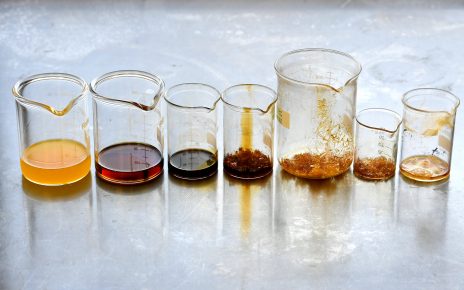The current COVID-19 pandemic underscores how unprepared we humans are in fighting zoonotic diseases: pathogens that originate in wildlife and jump to humans. Human immune systems are equally unprepared for drug-resistant diseases that jump from plants to humans. As we work to control and treat the current pandemic, we must simultaneously be thinking one step ahead—how we can avoid other pandemics in the future, without disrupting our food supply?
Over the past decade, drug-resistant fungal diseases have emerged as a major health threat, including Candida auris—a highly infectious fungus sweeping through hospitals across the globe before the coronavirus crisis hit. Ten years ago, no one had heard of C. auris. Today, it kills half those afflicted within 90 days, and the scourge has spread to 19 countries (and counting). But where did this fungus develop its drug resistance? One surprising theory: C. auris may have developed its resistance on farms, and not in hospitals.
The crop protection products farmers use to control many plant diseases are almost identical to the go-to drugs doctors use to treat infections, including fungi. Fungi are continually mutating, and with a life cycle measured in days or weeks, they mutate quickly. When a mutation produces resistance to a fungicide, that particular strain will flourish as the nonresistant strains die off. Fungi are opportunistic and will jump to any host that provides a welcoming environment, such as a human body. And if the treatment for the fungal infection involves a drug identical to the fungicide encountered on the farm, the fungus may flourish in the human body—just as it did in the field.
An obvious solution is to use less fungicide in the field. One theory for C. auris’ emergence is that the overuse of fungicides killed off all of its competitors, causing C. auris to undergo explosive growth. Reducing fungicide use would not only slow the development of resistant strains, it would help restore diversity to the fungal world, thereby providing a check on the prevalence of any one pathogen. In other words, it would help prevent another drug-resistant fungus from emerging out of the field and into the human body. It would also help farmers as resistant pathogens potentially nullify the yield benefits of fungicide.
Fungicides are a must in the farming community. Plant diseases pose a major problem for farmers globally—in some crops, disease can reduce harvests by more than 70 percent—and failure to deal with the problem can mean financial ruin or famine. At a time when our population is growing while arable land is shrinking, we cannot afford this loss.
But what if the plant itself had its own defense against disease?
Just like a fungus—or, indeed, any living thing—plants continually evolve. This is how natural gene editing works, and without it, we’d all still be single cells in a salty soup. Through natural selection, almost any plant will eventually produce a strain resistant to a particular fungus (some ancestral forms of staple crops may have already done so, unbeknownst to science). But this can take centuries, and with resistant and deadly strains of fungi proliferating, we don’t have the time to wait.
On the other hand, advances in genetics have given us an understanding of nature’s gene editing process in plants, helping us develop resistance to a disease. Gene editing techniques can then enable us to cut to the chase, so to speak, and inculcate disease resistance—just as nature would do, if given enough time. Gene editing enables us to do this by making minor tweaks in the genome of a plant or crop, but without introducing foreign genetic material (a bugaboo for those concerned with genetically modified organisms, or GMOs).
Can this be done? The short answer is yes—and the agricultural biotech industry is already doing it.
The current pandemic offers a pointed message that we must be better about mitigating the risks associated with zoonotic diseases. Even though C. auris and other resistant strains of fungi have already made the jump from the farm to hospitals, gene editing can still play a vital role in preventing additional pathogens from making that same journey.




